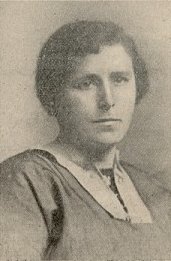Red Clydeside
Red Clydeside was the era of political radicalism in Glasgow, Scotland, and areas around the city, on the banks of the River Clyde, such as Clydebank, Greenock, Dumbarton and Paisley, from the 1910s until the early 1930s.Some newspapers of the time used the term "Red Clydeside" to refer, largely derisively, to the groundswell of popular and political radicalism that had erupted in Scotland.The CWC led the campaign against the coalition governments of H. H. Asquith and David Lloyd George and the Munitions of War Act 1915, which forbade engineers leaving the company they were employed in.The CWC met with government leaders, but no agreement could be reached and consequently both Gallacher and Kirkwood were arrested under the terms of the Defence of the Realm Act, and jailed for their activities.From this meeting, and alongside her fellow Rent Striker Agnes Dollan, The Women's Peace Crusade (WPC) arose in November 1916 in Govan, Glasgow.As intended, the organisation initially attracted working-class women in Govan to activism, and with open air meetings throughout Glasgow, Edinburgh and within Lowland Scotland they began to extend their reach.[6] By 1917, street meetings were regularly being held all around the districts of Glasgow and beyond, including Partick, Maryhill, Bridgeton, Parkhead, Govan, Govanhill, Whiteinch, Shettleston, Springburn, Possilpark, Bellahouston, Rutherglen, Paisley, Overnewton Barrhead, Cambuslang, Blantyre, Alloa, Cowdenbeath, Drongan, Drumpark, Douglas Water and Lanark.[11] John Maclean of the British Socialist Party organised the Scottish Federation of Tenants' Associations[12] in 1913 to fight against rent increases and championed public housing.Strikes ignited in Partick, Parkhead, Pollokshaws, Pollok, Cowcaddens, Kelvingrove, Ibrox, Govanhill, St Rollox, Townhead, Springburn, Maryhill, Fairfield, Blackfriars, and Woodside.Trade unions threatened factory strikes if evictions supported by the police continued and following demonstrations on 17 November, legal action against rent strikers was halted.The aura of Red Clydeside grew as delegations of organised labour replaced the Liberal Party as the political formation most popular among the working class.At the 1989 Glasgow Central by-election, the Scottish National Party candidate Alex Neil called himself and the SNP member of Parliament for Govan at the time, Jim Sillars; the "new Clydesiders".

political radicalismGlasgowScotlandRiver ClydeClydebankGreenockDumbartonPaisleylabour movementworking-classBritainFirst World WarradicalismSociety of the Friends of the PeopleRadical WarSingerstrikeJane RaeIndustrial Workers of Great BritainArthur McManusCommunist Party of Great BritainWorld War IScottish Trades Union CongressWillie GallacherClyde Workers' CommitteeDavid KirkwoodH. H. AsquithDavid Lloyd GeorgeMunitions of War Act 1915Defence of the Realm ActAnti-warMarxistJohn MacleanIndependent Labour PartyJames MaxtonHelen CrawfurdAgnes DollanWomen's Peace CrusadeEdinburghLowland ScotlandPartickMaryhillBridgetonParkheadGovanhillWhiteinchShettlestonSpringburnPossilparkBellahoustonRutherglenBarrheadCambuslangBlantyreCowdenbeathDronganDouglas WaterLanarkGlasgow Green1915 Glasgow rent strikeMary BarbourRoyal Commission on Housing and the Working ClassBritish Socialist PartyGlasgow Women's Housing AssociationMary LairdMary JeffJessie StephenJessie FergussonSt Enoch SquareThomas McKinnon WoodRents and Mortgage Interest Restriction Act 19151919 Battle of George SquareMedium Mark Ctrade unionsGeorge SquareRed FlagRiot ActRussian RevolutionGerman RevolutionManny ShinwellMay DayWilliam GallacherCommunistLiberal Partyworking class1922 general electionHouse of CommonsNeil MacleanGeorge BuchananLabour PartyUpper Clyde Shipbuilders Work InGlasgow North East1989 Glasgow Central by-electionScottish National PartyAlex NeilJim SillarsAlistair HulettDave SwarbrickJohn McGrathGallacher, WilliamArchitectureEducationIdentityLanguageLiteratureReligionDevolutionScottish Covenant AssociationThe Edinburgh SchoolGlasgow schoolHighland Land LeagueIndependenceScottish RenaissanceHistory of the United Kingdom


